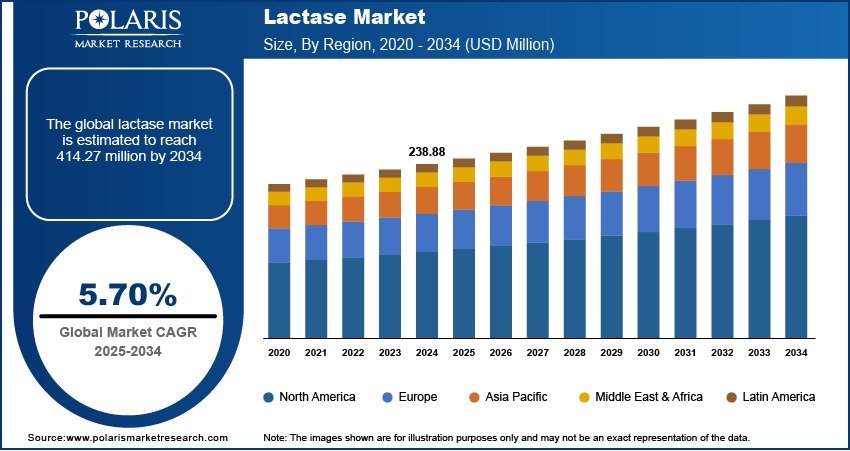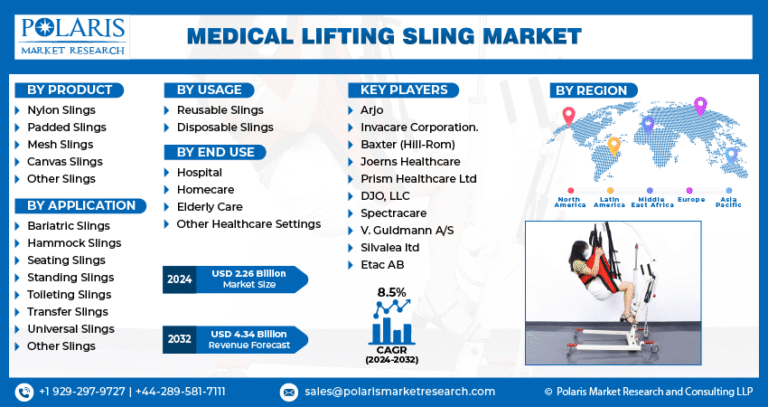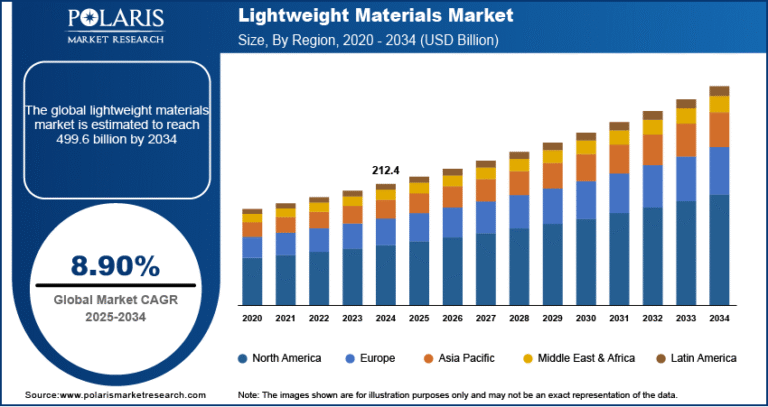Lactase Market Size Projected to Reach USD 414.27 Million by 2034 | CAGR: 5.70%

The global lactase market was valued at USD 238.88 million in 2024 and is projected to grow at a CAGR of 5.70% from 2025 to 2034. The market is gaining momentum due to increasing awareness of lactose intolerance and the growing demand for lactose-free and dairy-alternative products.
Key Market Trends
Technology & Innovation
- Biotech advances (e.g., fungal/bacterial fermentation, enzyme stabilization) reduce costs and boost efficiency.
- Product launches like DSM‑Firmenich’s Maxilact Next (25% faster hydrolysis) and Novozymes’ Saphera Fiber enhance convenience and taste.
Product Forms & Applications
- Liquid form dominates food & beverage segment (e.g. milk, yogurt), preferred for processing ease.
- Dry/powder supplements growing fastest in pharmaceutical and digestive health categories .
- Expanding use in infant/clinical nutrition and plant-based dairy alternatives .
Market Challenges & Barriers
- High production costs, intricate biotech processes, and R&D requirements hinder smaller players .
- Price sensitivity especially in developing regions limits adoption of premium lactase treatments .
Sustainability & Regulatory Trends
- Shift toward eco-friendly enzyme production, cleaner fermentation technologies, and transparent sourcing .
- Strict food safety and labeling standards in Europe and North America shape product development .
Emerging Opportunities
- Capitalizing on high lactose intolerance (85% in China), firms invest heavily in Asia‑Pacific markets .
- Growth avenues in enzyme-enhanced plant‑based dairy, infant nutrition, and digestive supplements
Market Size & Forecast
Market size value in 2024 USD – 238.88 million
Market size value in 2025 USD – 251.97 million
Revenue Forecast in 2034 USD – 414.27 million
CAGR – 5.70% from 2025 – 2034
Request for Free Sample:
https://www.polarismarketresearch.com/industry-analysis/lactase-market/request-for-sample
Industry Overview:
The lactase market revolves around the production and application of lactase enzyme, which is used to break down lactose—a sugar found in milk and dairy products—into simpler sugars like glucose and galactose. Lactase is widely utilized in the food and beverage industry to manufacture lactose-free dairy products, catering to individuals with lactose intolerance. It is also consumed as a dietary supplement to aid digestion and improve gut health. The market includes both industrial-grade lactase for food processing and consumer-grade supplements available in various forms such as tablets, capsules, and drops. As lactose intolerance becomes more widely recognized globally, demand for lactase-based solutions continues to rise.
Key Market Drivers & Barriers:
A major driver of the market is the increasing prevalence of lactose intolerance across global populations, particularly in Asia-Pacific, Africa, and Latin America, where dairy digestion issues are more common. Growing awareness of digestive health benefits and rising consumption of dairy alternatives have further boosted market growth. Additionally, innovations in enzyme technology and expansion of lactose-free product lines by major dairy manufacturers are contributing to increased lactase adoption. However, high production costs of enzyme extracts and regulatory complexities regarding labeling and claims can limit market expansion. Consumer misconceptions about enzyme efficacy and inconsistent pricing also pose challenges to widespread acceptance.
Market Opportunity:
The lactase market offers significant opportunities in the development of specialized formulations tailored for different age groups, dietary preferences, and clinical applications such as infant nutrition and medical nutrition therapy. Expansion into emerging markets with growing health consciousness and rising disposable incomes presents substantial potential. Moreover, the integration of lactase into plant-based and fortified dairy alternatives aligns with current trends in clean-label and functional foods. With advancements in biotechnology and increasing collaboration between food producers and enzyme suppliers, the lactase market is well-positioned for robust growth across both industrial and consumer sectors.






